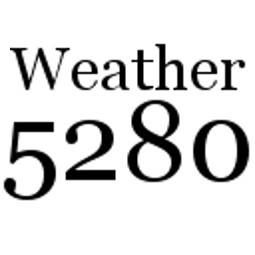
Denver's winter temperature remains on track despite fewer extreme cold events

How can we measure cold snaps? Well, for this purpose let's look at winter average low temperatures and the number of days that cool to zero degrees or colder, and then we'll look at the coldest of the cold readings.
To begin, let's just look at the Denver-averaged occurrence of low temperatures dropping to and below zero in our history. Denver "officially" uses this record known as 'Denver Area.'

In that span, there is a decrease in the number of days that have dropped to and below zero. Denver "officially" averages a handful of these days every year, from about 8 to 5 days a year in over 100 years.
Stop right there!
However, we know that the climate location known as the Denver Area is composed of multiple sites in its history - that's not good for a climate perspective.
The longest period of record for a Denver location leads us to the Central Park site.

For that singular location we do see a similar decrease in our defined cold days. From about 8 to 5 days a year. Let's see the impact of that loss on overall temperatures.
Let's look at the winter average temperature in the station's period of record.

There's a slight increase in the winter temperatures overall.
Let's just look at low temperatures, instead of highs and lows together.

The mean low temperatures are roughly on pace with the mean winter temperatures, makes sense.
Let's turn to where we see the, perhaps, biggest change to Denver's winter temperatures.
The coldest of the cold numbers show a notable warming; extreme cold events are trending warmer. Since the early 90s, we haven't recorded any truly extreme cold events.

You might expect to see a much greater winter temperature warming trend considering the cold extremes aren't quite as extreme, and we aren't cooling to zero and below as often, but look at how each month has changed.
Yes, during winter we may not be getting as cold in terms of extremes but December and February(albeit slightly) are both trending colder overall as January trends warmer.



That's a lot to digest, so bottom line: we see a slight warming trend in winter mean temperatures overall, but the extreme cold events appear to be less extreme along with the number of times Denver's Central Park hits 0 degrees or colder is getting fewer.
Also dazzle your friends with the idea that Januaries are getting warmer and Decembers are getting colder.
Although average low temperatures are roughly what we'd think, the extreme cold for Denver has changed over the years. It would be nice to analyze the data with an effective way of removing land-use changes in the city, alas...
